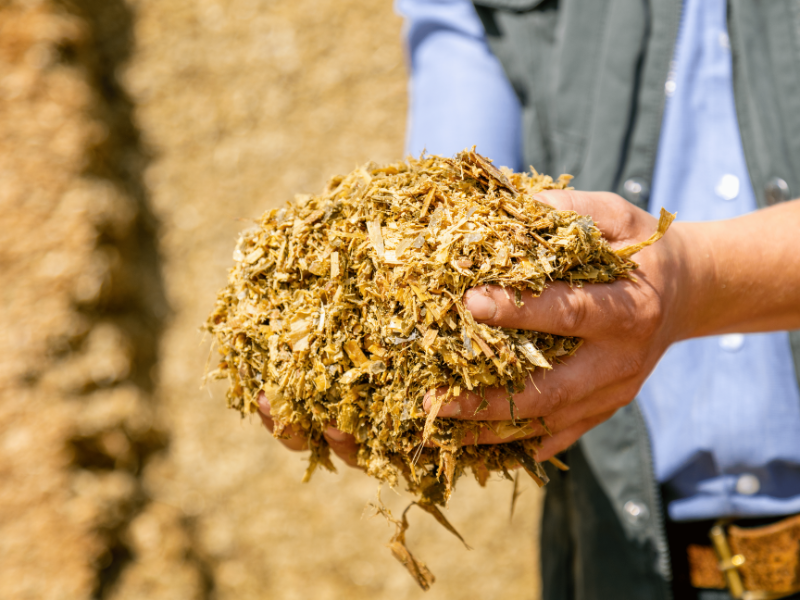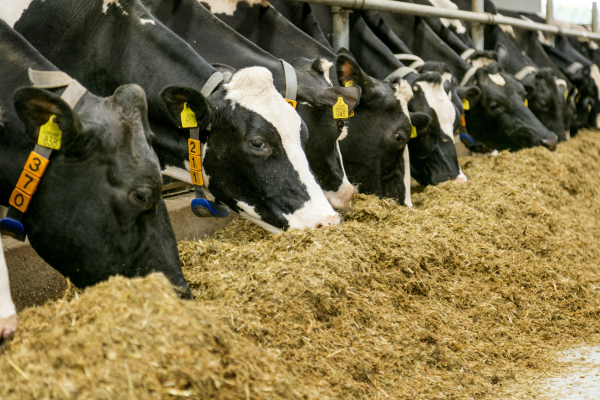What happens at 20–22°C?
Scientific research has shown that TMR exposed to air at ambient temperatures between 20-22°C can experience internal temperature increases of 5 to 30°C above the environment. This heat buildup is primarily driven by microbial activity, especially yeasts and moulds.
As temperature rises:
- Nutrients degrade, particularly energy-dense components.
- Palatability drops, leading to lower dry matter intake.
- Cows may reduce feed consumption, directly affecting milk production and overall performance.
Why it matters for dairy and beef producers
Warm weather combined with poor feed-out practices (like long exposure to air or inadequate face management) creates ideal conditions for aerobic spoilage.
Aerobic instability accelerates nutrient losses. Higher moisture content and oxygen exposure favor yeast and mould proliferation. Even well-preserved silages or TMRs can spoil rapidly if not managed at the point of feeding.

Take action: Minimize spoilage risks
To safeguard feed quality:
- Evaluate the spoilage risk of silages and TMR regularly.
- Limit air exposure during storage and feeding.
- Consider organic acid additives to improve aerobic stability.
- Ensure good face management and fast feed-out rates.
- Minimize water addition to the TMR when possible.
- Clean the feed bunk regularly to prevent microbial buildup.
Conclusion
TMR spoilage doesn’t wait for extreme heat. It can begin quietly at moderate temperatures, especially above 20°C. The resulting nutrient loss and reduced intake can have major consequences for productivity. Proactive management is key to maintaining feed integrity and supporting herd performance.
References
- Borreani, G., Tabacco, E., Schmidt, R. J., Holmes, B. J., & Muck, R. E. (2018). Silage review: Factors affecting dry matter and quality losses in silages. Journal of Dairy Science, 101(5), 3952-3979. https://doi.org/10.3168/jds.2017-13837
- Wilkinson, J. M., & Davies, D. R. (2012). The aerobic stability of silage: key findings and recent developments. Grass and Forage Science, 68(1), 1-19. https://doi.org/10.1111/j.1365-2494.2012.00891.x


